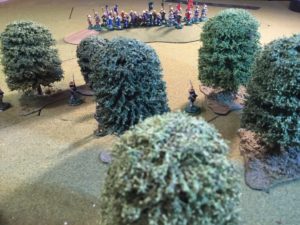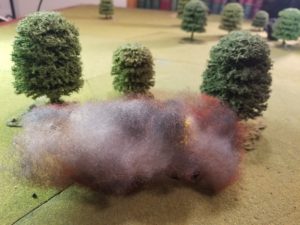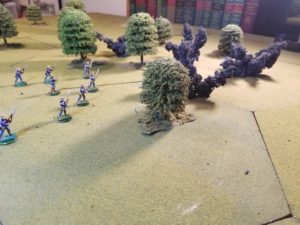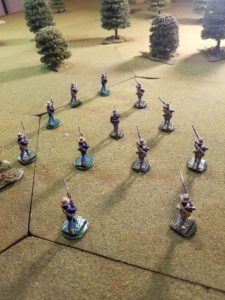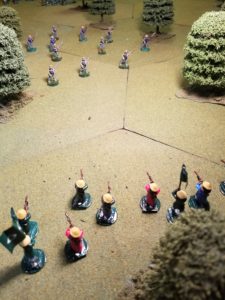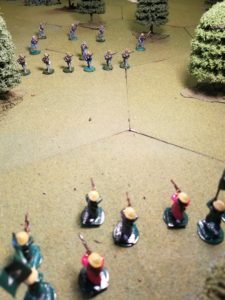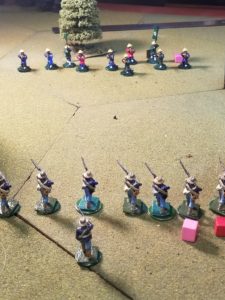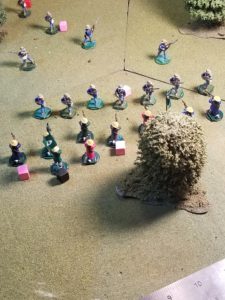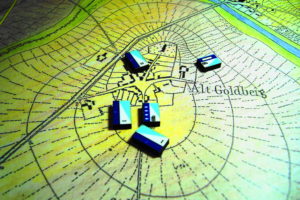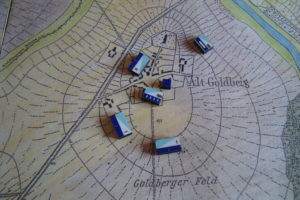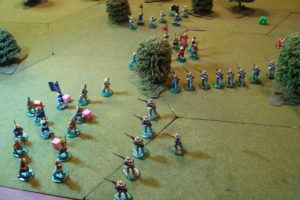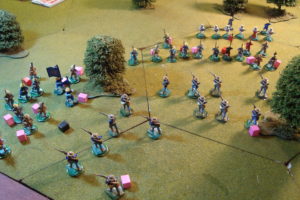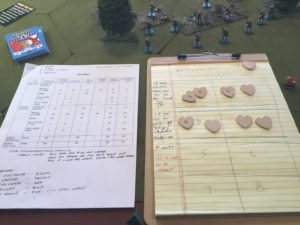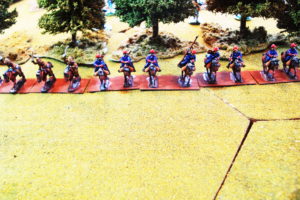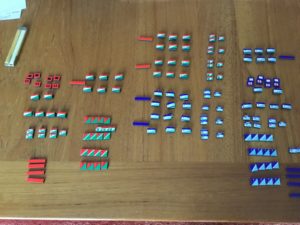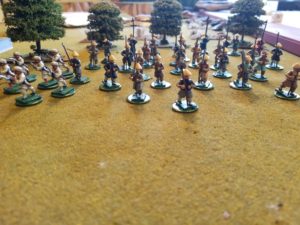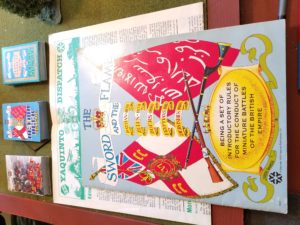Event and Terrain Cards are played. The former limits visibility to 20 inches, while the latter causes a Marine to badly hurt his leg and fall behind the others.
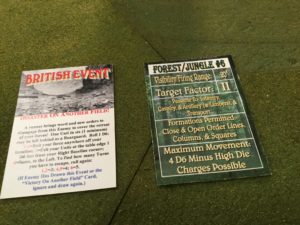
The Boxers roll for reinforcements each Movement phase. A roll of “Yes” generates a number of units equal to a D4.
The Marines respond artillery fire by shifting to a skirmish line, but vegetation (bad die rolls) slows movement to the edge of the woods.
A second artillery round (the antiquated cannon can shoot every two moves), kills the limping Marine.
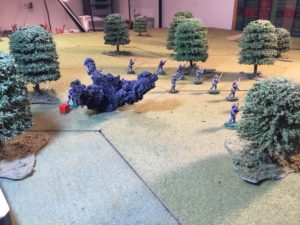
A combination of bad Boxer luck and two good movement rolls allow the Marines to reach the tree line. They can easily destroy the Boxer field gun if their luck can hold concerning Boxer reinforcements. But, NO. A “Yes” is rolled with a D4 of “3” calling for three Boxer units, one of which will be a rifle unit.
Will the Boxers be positioned on top of the ridge, or in defilade? A “Maybe” roll for top of the ridge leads to a 50-50 chance. The ensuing die roll indicates the Boxers are massed along the ridge. Such a tempting target!
This is a SERIOUS problem for the Marine Lieutenant. Does he engage or withdraw. His orders were to clear the woods. The Boxers have already had their Movement Phase. If the Marines fall back now, they can probably make it back to their camp and report the presence of this force. If they send a runner, he might summon reinforcements for support. Or, is it “Death Or Glory”?
